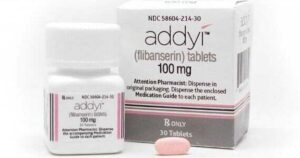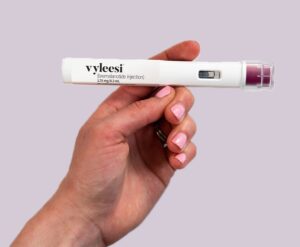For years, the focus of sexual health medications has largely been on men, with drugs like Viagra and Cialis gaining widespread attention for addressing erectile dysfunction. However, the conversation around women’s sexual health has been gaining momentum, leading many to wonder: is there a Female Viagra? Women, like men, may face challenges with sexual function and desire, which can affect their relationships and overall well-being.
This article dives into the existence of Female Viagra, what it is, how it works, and what side effects to be aware of. Whether you’re curious about treatment options or seeking answers for yourself or a loved one, this comprehensive guide aims to provide clarity.

Does Female Viagra Exist?
The short answer is yes, but it’s not exactly the same as Viagra for men. Unlike traditional Viagra, which directly targets blood flow to address erectile dysfunction, the treatments developed for women focus on enhancing sexual desire and arousal. Women’s sexual dysfunction is complex and influenced by hormonal, psychological, and physical factors, which means treatments are designed to address these broader concerns.
Two medications are often referred to as the Female Viagra:
1. Flibanserin (Addyi):

Approved by the FDA in 2015, Addyi is often called the Female Viagra. It is intended for premenopausal women experiencing hypoactive sexual desire disorder (HSDD)—a condition characterized by a persistent lack of sexual desire that causes personal distress. Addyi is not a take-as-needed pill like Viagra but a daily medication taken over time to help restore sexual desire by targeting neurotransmitters in the brain, such as dopamine and serotonin
2. Bremelanotide (Vyleesi):

Approved in 2019, Vyleesi is another treatment for premenopausal women with HSDD. Unlike Addyi, Vyleesi is administered as an injection about 45 minutes before sexual activity. It works by activating melanocortin receptors in the brain, which are believed to play a role in sexual arousal and desire.
It’s important to note that neither of these medications works in the same way as traditional Viagra for men. They are not designed to address physical issues like vaginal dryness or lack of blood flow, but rather the psychological and neurological factors contributing to sexual desire.
Read: Is it safe to have sex during pregnancy?
How Female Viagra Works
Understanding how these medications work requires a look at the different mechanisms behind female sexual desire. Women’s sexual health is influenced by a complex interplay of brain activity, hormone levels, and emotional well-being, which is why treatments like Addyi and Vyleesi take a more holistic approach.
- Flibanserin (Addyi): Addyi works by targeting specific neurotransmitters in the brain that influence mood and desire. It is often compared to antidepressants because it modifies levels of serotonin and dopamine. Serotonin can suppress sexual desire, while dopamine is associated with feelings of pleasure and reward. By balancing these chemicals, Addyi is thought to enhance sexual desire over time.
Unlike Viagra for men, which takes effect within minutes, Addyi must be taken daily, and its effects may take several weeks to become noticeable. This is because the drug’s goal is to gradually recalibrate brain chemistry to increase sexual interest.
- Bremelanotide (Vyleesi): Vyleesi, on the other hand, works more immediately. Administered as an injection, it stimulates melanocortin receptors in the brain that are involved in sexual arousal. This mechanism leads to a temporary increase in sexual desire, making it a more on-demand option than Addyi.
Vyleesi’s effects are thought to peak within an hour of use, allowing women to plan for sexual activity. However, it is not recommended for frequent use; typically, no more than eight doses per month should be administered.
Both medications highlight the significant differences between male and female sexual health treatments. While male sexual dysfunction often has a clear physical cause, such as poor blood flow, female sexual dysfunction is more nuanced and tied to a combination of mental and physical factors.
Read: What are the Medicines to avoid during pregnancy?
Side Effects of Female Viagra
Like any medication, both Addyi and Vyleesi come with potential side effects. Understanding these risks can help women make informed decisions about whether these treatments are right for them.
- Common Side Effects of Addyi: – Dizziness: One of the most reported side effects, particularly when combined with alcohol. – Sleepiness: Addyi can cause significant drowsiness, which is why it’s recommended to take it at bedtime. – Nausea: Some women experience mild to moderate nausea when starting the medication. – Fatigue: Fatigue is another frequent complaint, though it often diminishes over time.
Important Precaution:
Addyi comes with a strong warning against alcohol consumption. Drinking alcohol while on Addyi can lead to severe drops in blood pressure and fainting. Women are advised to avoid alcohol altogether while using the medication.
- Common Side Effects of Vyleesi: – Nausea: This is the most frequently reported side effect, occurring in up to 40% of users. – Flushing: Some women experience redness or warmth in their skin after an injection. – Headache: Mild to moderate headaches have been reported. – Injection Site Reactions: Bruising or discomfort at the injection site is common but usually temporary.
Important Precaution:
Vyleesi is not recommended for women with high blood pressure or cardiovascular issues, as it can cause a temporary increase in blood pressure after use.
- Rare but Serious Side Effects: Both medications have rare but more serious risks, such as severe allergic reactions. Additionally, Addyi may have interactions with other medications that could heighten the risk of side effects.
Women considering these treatments should have an open and honest conversation with their healthcare provider about their medical history, current medications, and lifestyle habits to ensure these options are safe for them.
Read: How to cure Psoriasis permanently?
Conclusion
The concept of Female Viagra is both intriguing and important in the context of advancing sexual health treatments for women. While there isn’t an exact female counterpart to Viagra, medications like Addyi and Vyleesi offer viable options for women struggling with low sexual desire due to HSDD.
Key Takeaways
– Addyi (Flibanserin): A daily oral medication that works over time by balancing neurotransmitters in the brain to increase sexual desire.
– Vyleesi (Bremelanotide): An as-needed injectable option that temporarily boosts sexual arousal by stimulating melanocortin receptors.
– Both medications are approved for premenopausal women with HSDD and should only be used under a doctor’s supervision.
– Side effects range from mild (like nausea and dizziness) to more serious risks, particularly in combination with alcohol or certain health conditions.
Women interested in these treatments should speak with a healthcare professional to determine if they are suitable candidates. While these options may not be right for everyone, their existence marks a significant step forward in recognizing and addressing women’s sexual health needs.
Ultimately, treatments like Addyi and Vyleesi can empower women to take charge of their sexual well-being, fostering better relationships and improved quality of life.
We provide you with authentic, trustworthy and relevant information. Want to know more?
Have an issue with the content report problem.
Read: Generic vs Branded Medicines? What are Generic Medicines nd why are they so affordable?
Pingback: Are Societal Expectation ruined the Mental Heath of Men? – Know Your Drug
Pingback: Early Pregnancy Symptoms you should know? – Know Your Drug